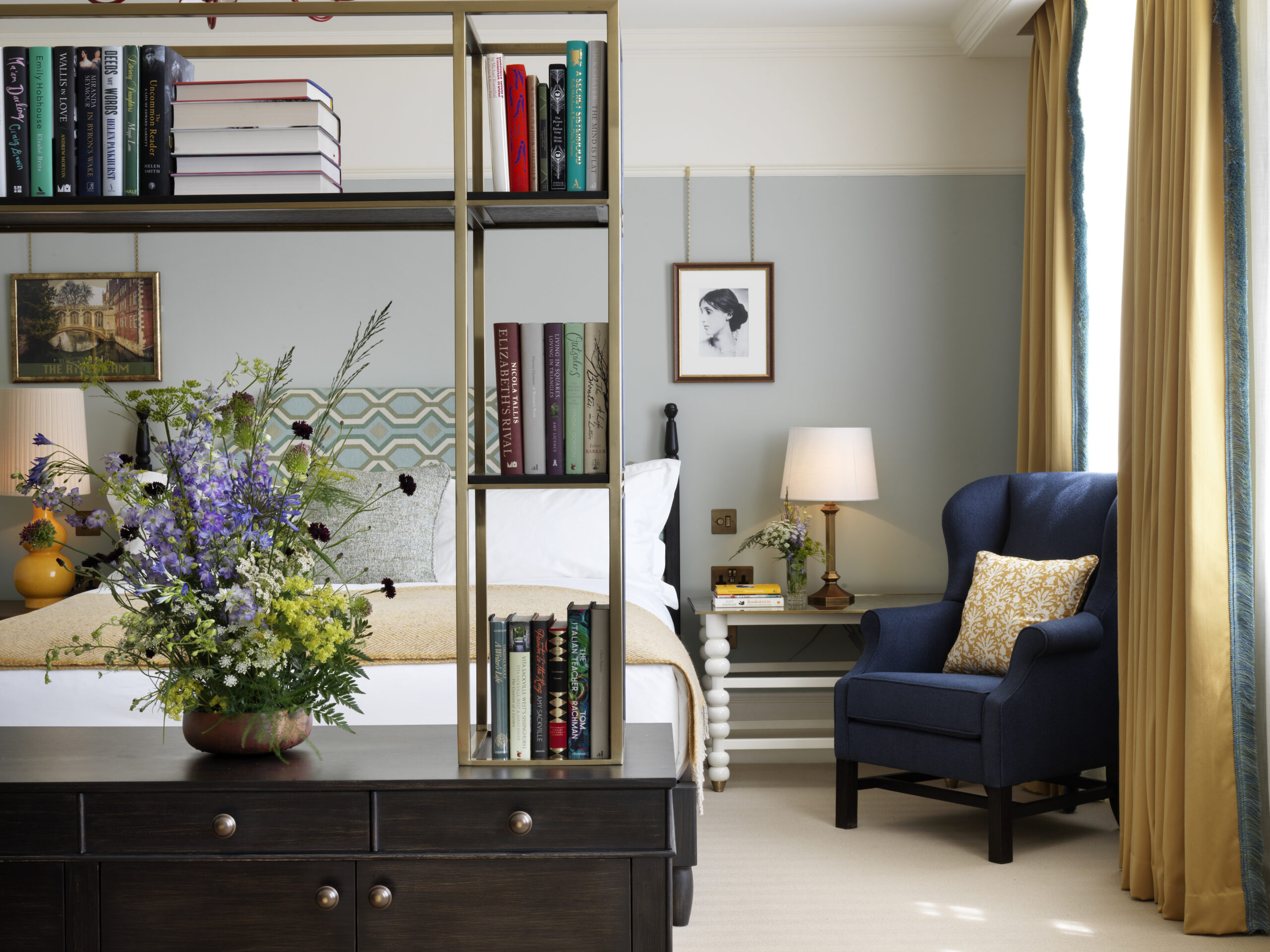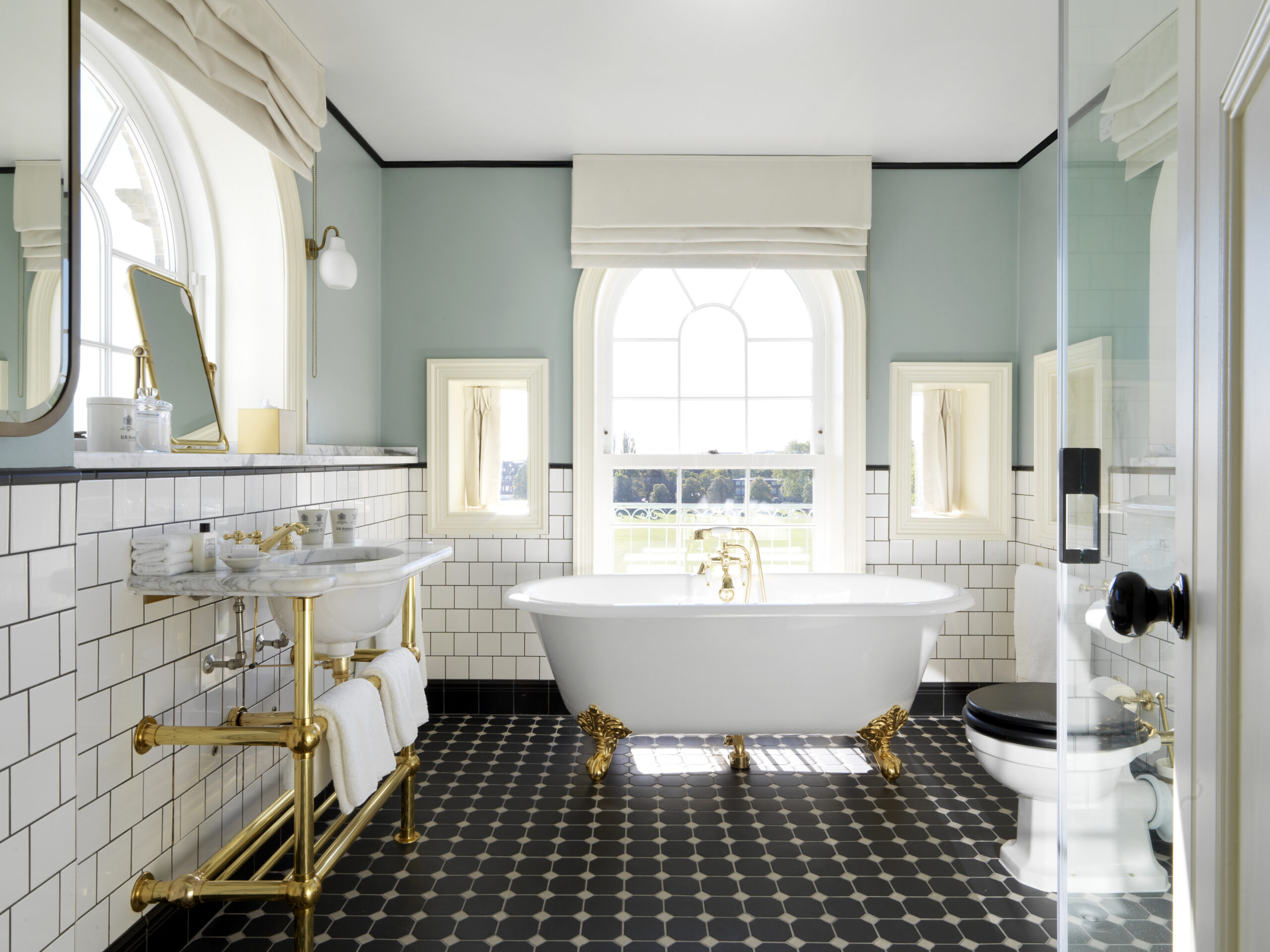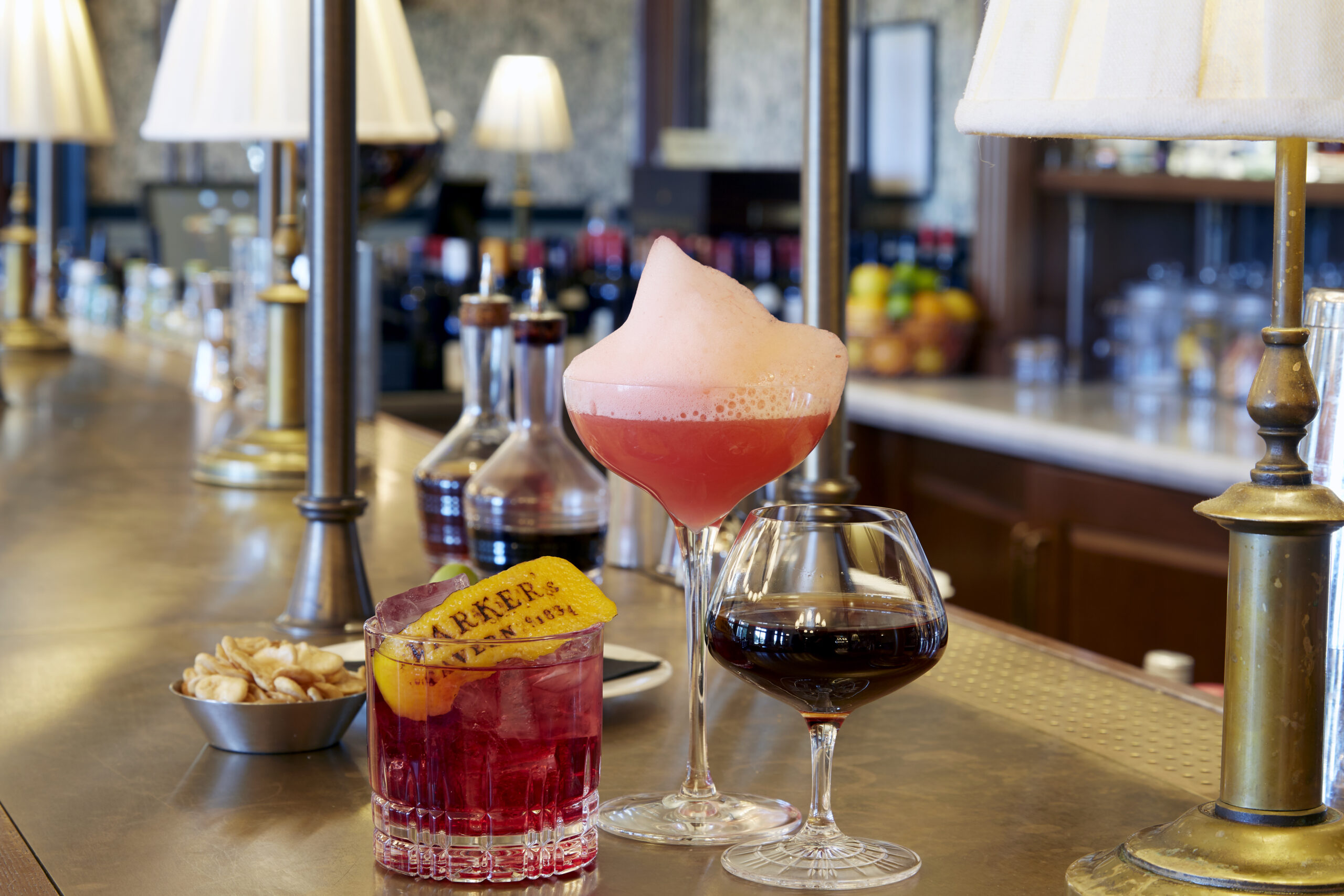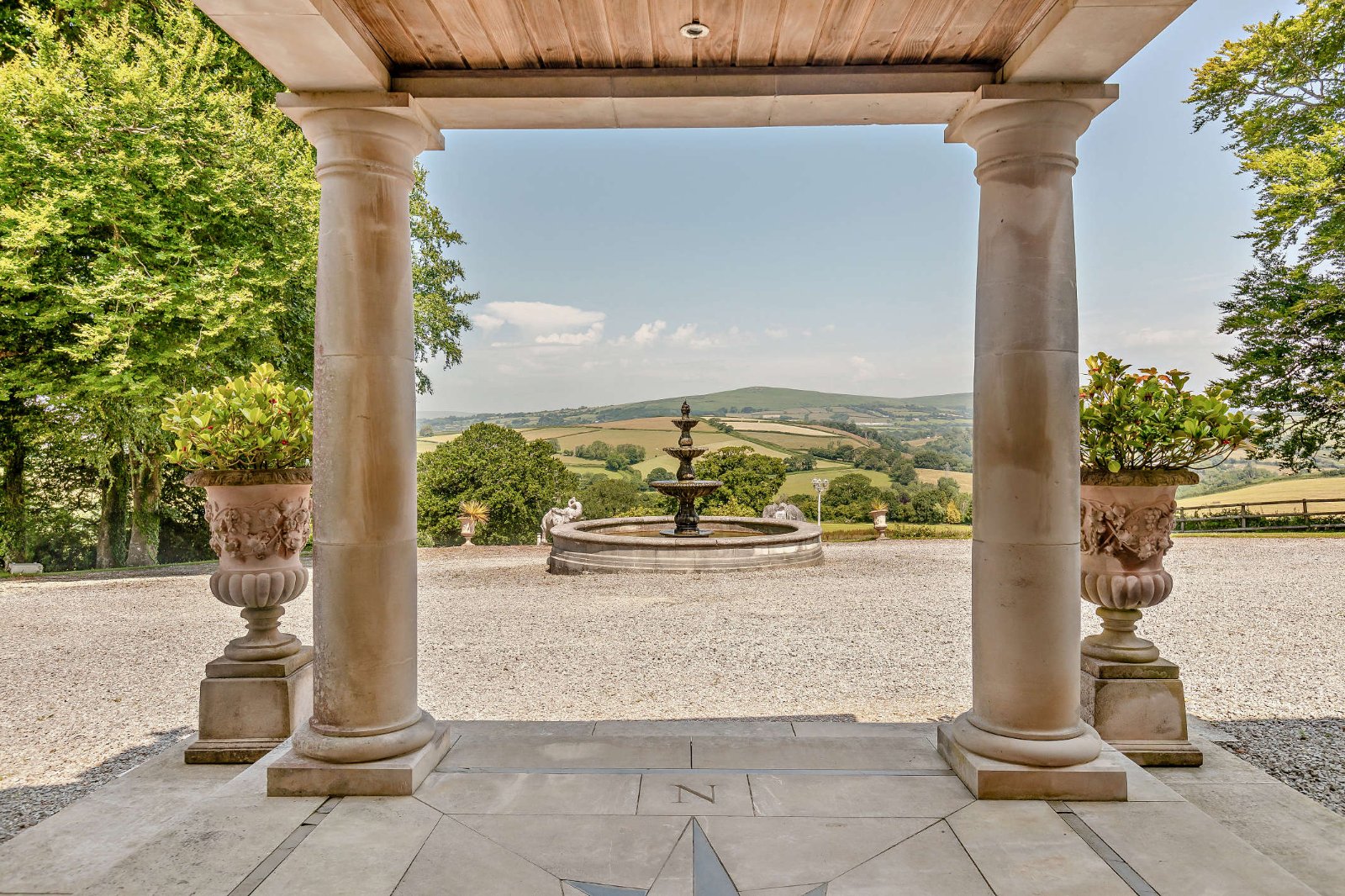University Arms, Cambridge, review: The hotel where a book butler comes as standard
The world’s biggest crème brûlée, Edwardian luxury, books, books and more books — Annunciata Elwes explores the University Arms, Cambridge.


I wouldn’t dream of judging anyone to whom it has never occurred that a ‘book butler’ is the person they are most missing in life. However, once you’ve met one, you can never go back to choosing your own books without wistfully remembering the butler that got away…
As befits the best hotel in a city that’s home to the highest-rated university in the UK (and only second in the world rankings), books and bookishness are a major theme at the University Arms.
The book butler is on hand to make recommendations, deliver reading material to your room from the downstairs library (stocked by Mayfair’s Heywood Hill) and ensure that your preferred audio book is playing on the loudspeaker during your spa treatment.

Each of the University Arms’ 10 suites and two superior rooms are named for famous Cambridge alumni — and filled with their written works. All 192 rooms contain a copy of The Wind in the Willows — no one seems to know why, but we’re not complaining. And Alan Bennet’s comforting tones can be heard narrating the Kenneth Grahame classic on repeat in the downstairs loos.
Aside from being a place filled to the brim with stories, the University Arms has witnessed history from its prime city-centre location for the past 190 years.
Behind a grand, classical facade, the best rooms have far-reaching views over Parker’s Piece. This is Cambridge’s 25-acre common where the rules of football were famously established, ‘probably the finest cricket ground in the world’, according to 19th-century cricketer Jack Hobbs, and which is named for the 16th-century Trinity College cook, Edward Parker, who grazed his cattle there.
The rooms

In 1834, the University Arms started life a coaching inn and was gradually expanded with the changing needs of the times — by 1900, it was one of the largest hotels in Cambridge.
Exquisite houses, the beauty of Nature, and how to get the most from your life, straight to your inbox.
A savvy developer, Marcus Bradford, converted the stable yard into a state-of-the-art garage with a steel-and-glass roof in 1904, because of the motorcar’s increasing popularity; he also added the ballroom and Winter Garden. In 1925, Chevely Park was demolished and much of the interior found its way to the University Arms, including ‘acres of oak panelling’ and ‘magnificent fireplaces’.

The hotel reopened in 2017 after a two-year, £80 million overhaul by architect John Simpson, who has worked on Buckingham and Kensington Palaces and interior designer Martin Brudnizki (responsible for the Annabel’s and Ivy revamps). A sophisticated combination of all that history has resulted in 192 stylish quasi-Edwardian-style rooms in soft palettes of blues and greens, creating a comfortingly luxurious yet erudite atmosphere — think leather-topped writing desks, low ottomans and sofas, 300-thread-count bed linens, gleaming black, white and brass bathrooms stocked by Dr Harris & Co and gloriously wide sash or arched windows.
Suites subtly feature the Cambridge colours of blue, yellow and red and are named and themed around the likes of playwright Christopher Marlow and Virginia Woolf, with sitting areas, curated bookshelves and multi-roomed bathrooms with walk-in rain showers and claw-foot bathtubs. Thoughtful touches include plates of fruit, decanters of port and brandy, fresh flowers and even handprinted wastepaper baskets depicting each author.
Eating and drinking

I actually laughed with glee while cracking my spoon against the most enormous crème brûlée I’d ever seen (in fact, it was Cambridge burnt cream) while dining at Parker’s Tavern. It was fully 8in across and served in what appeared to be an oversized pasta bowl — impressive.
My wood fired rib-eye with local oyster mushrooms and chimichurri sauce was also both sizeable and delicious.
This dimly lit brasserie has a buzzy, Parisian feel, serving chef Tristan Welch’s classic British food with modern twists, ‘sourced from field, fen and English seas’. Everything is sumptuous here, from the red banquettes to the kaleidoscopic hues of pictures on the grey-painted panelled walls.

Next door, the cocktail bar serves fun bespoke concoctions such as The Sixth Man (Buffalo Trace, Monkey Shoulder, salted caramel, super lemon, egg white and whiskey-barrel-aged bitters) or the 1848 (a mix of Plantation 3 Rum, Italicus, yellow Chartreuse, basil, super lime and cucumber bitters).
This is also a lovely room, with its broad windows and doors overlooking Parker’s Tavern, for a quick lunch or afternoon tea.
How they’ll keep you busy
Food, drink and books aside, anyone seeking a relaxing experience can find it in the hotel’s Aromatherapy Associates treatment rooms (prices start from £60 for a 30-minute massage). The city is at your doorstep, but in a haven of a hotel such as this, hours can be whiled away.
What else to do while you’re there

The rambling, characterful city of Cambridge has endless attractions, including punting on the Cam, Choral Evensong in King’s College Chapel (sung most days during term time) and the Fitzwilliam Museum.
We visited Kettle’s Yard, the modern and Contemporary art gallery founded by Jim and Helen Eade, which started off in their cottage’s tiny sitting room and expanded and expanded as they bought adjoining buildings (above). This fascinating space was a home as well as a gallery and highlights of the diverse collection of objects, textiles, furniture and art include works by Barbara Hepworth, Ben and Winifred Nicholson, and Alfred Wallis, plus some very famous pebbles in a spiral and a lemon that has been in situ since 1957 (the curators assure me they replace it regularly).
Perhaps best explored on foot, Cambridge’s further artistic (sometimes playfully hidden) delights include an upside-down Anthony Gormley sculpture, Earthbound: Plant (you can only see the bottoms of his iron feet but he’s all there, buried beneath the paving stones beside the Sedgwick Museum of Earth Sciences) and the extraordinary Chronophage (‘time-eater’) known as the Corpus or Grasshopper Clock (affectionately termed Rosalind or Hopsy by students).
On the corner of Corpus Christi’s Taylor Library, it’s made from 24-carat gold and stainless steel, measures about 5ft in diameter and the sinister-looking grasshopper atop appears to eat up the seconds as they pass. Unveiled in 2008 by Stephen Hawking and named one of the greatest inventions that same year by Time, ‘terrifying’, ‘hypnotically beautiful’ and ‘deeply disturbing’ have all been used to describe it.
What gives the University Arms the ‘wow’ factor?
It’s all good. But the aforementioned library and book butler is the best.
The one thing we’d change

I stayed in the Virginia Woolf suite and, comfortable and elegant though it was (I enjoyed the double-sided telly and giant bathtub), I could have done without the multiple gloomy portraits of said writer gazing out at me from the walls. She’s not exactly cheerful looking. That said, I enjoyed the quote from Orlando handpainted on the bin, along with ‘Books are the mirrors of the soul’.
Rooms at the University Arms, Cambridge, cost from £204. Visit www.universityarms.com for more information and to book.
Annunciata is director of contemporary art gallery TIN MAN ART and an award-winning journalist specialising in art, culture and property. Previously, she was Country Life’s News & Property Editor. Before that, she worked at The Sunday Times Travel Magazine, researched for a historical biographer and co-founded a literary, art and music festival in Oxfordshire. Lancashire-born, she lives in Hampshire with a husband, two daughters and a mischievous pug.
-
 18 country houses across Britain, from £400,000 to £4 million, as seen in Country Life
18 country houses across Britain, from £400,000 to £4 million, as seen in Country LifeOur look at the homes to come to the market via Country Life this week picks out a charming Kent cottage and an Arts and Crafts house in Leicestershire.
-
 The greatest flowers make the greatest art
The greatest flowers make the greatest artA search for still-life subjects led Kate Friend to some of the greatest gardens and gardeners in the country
